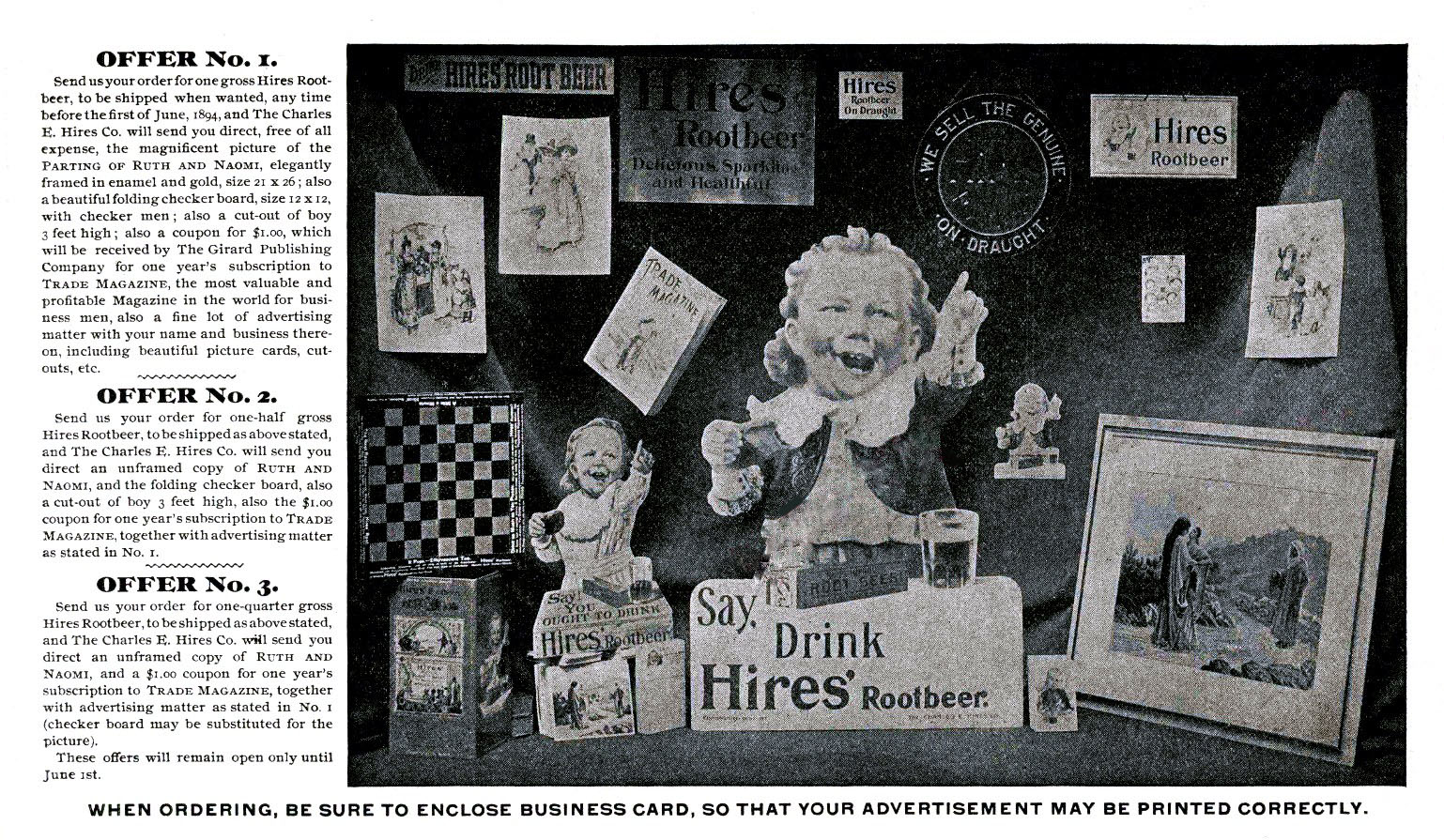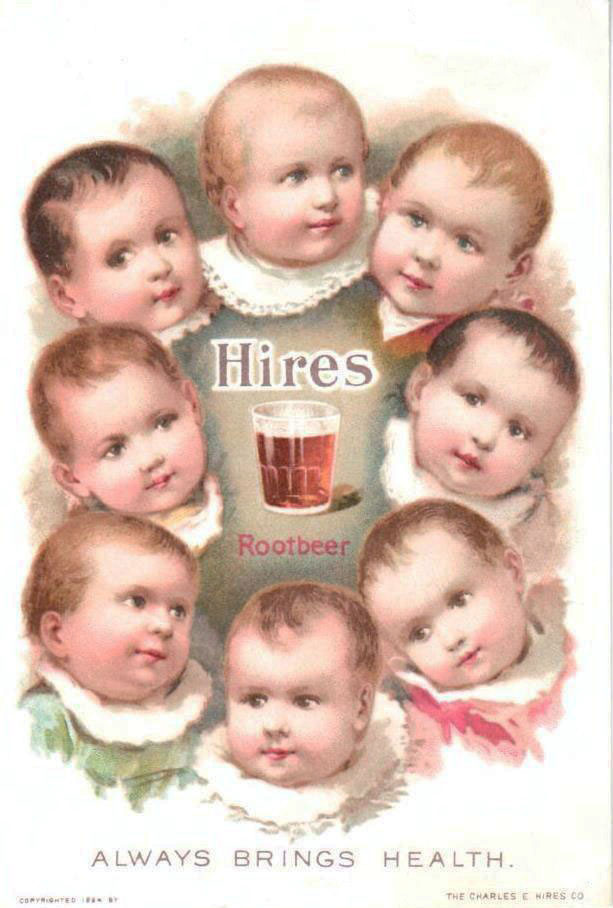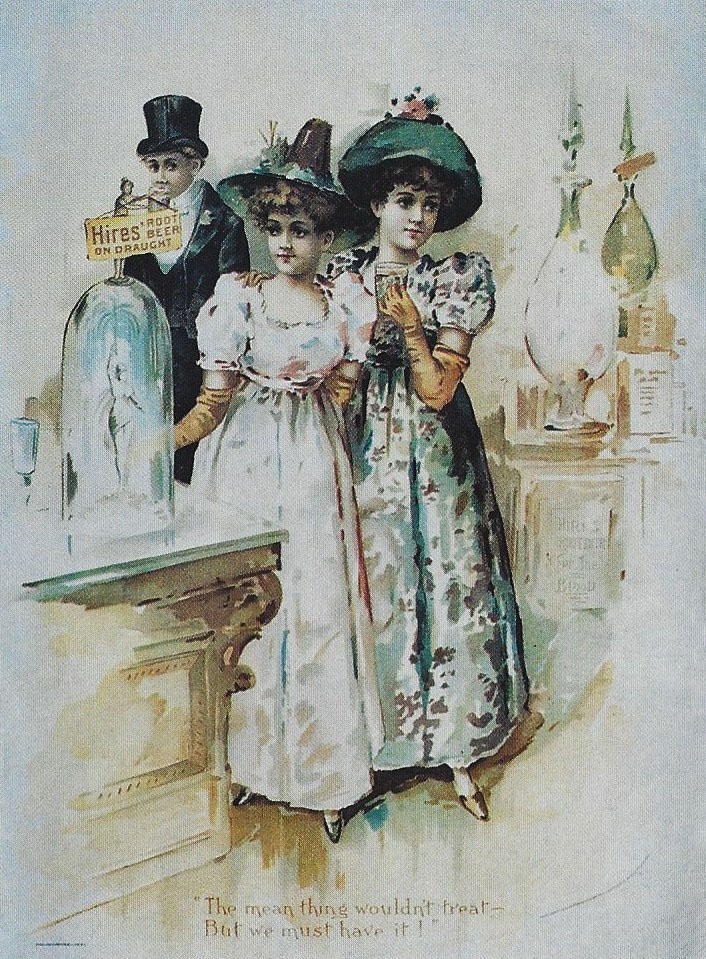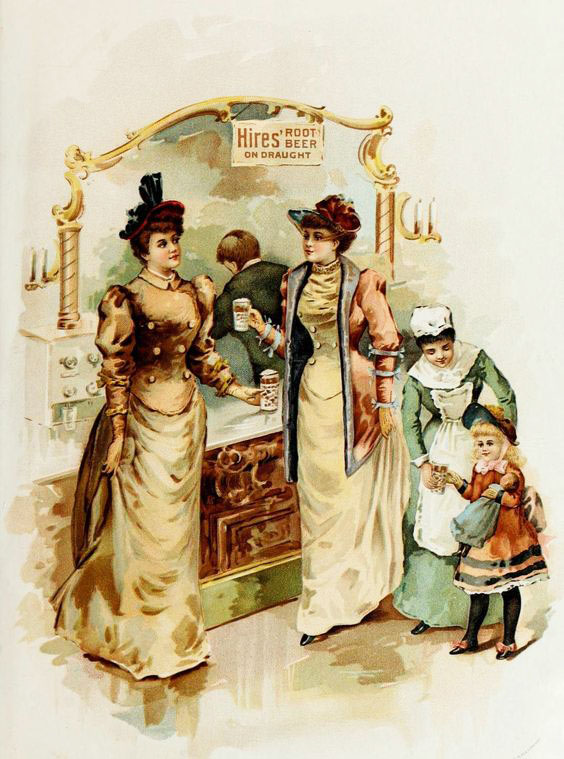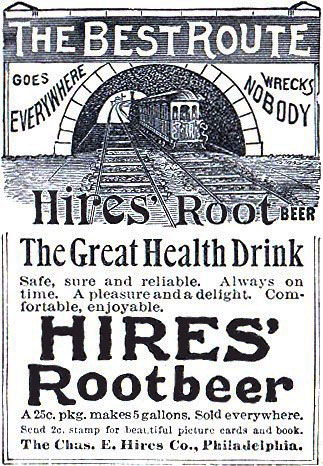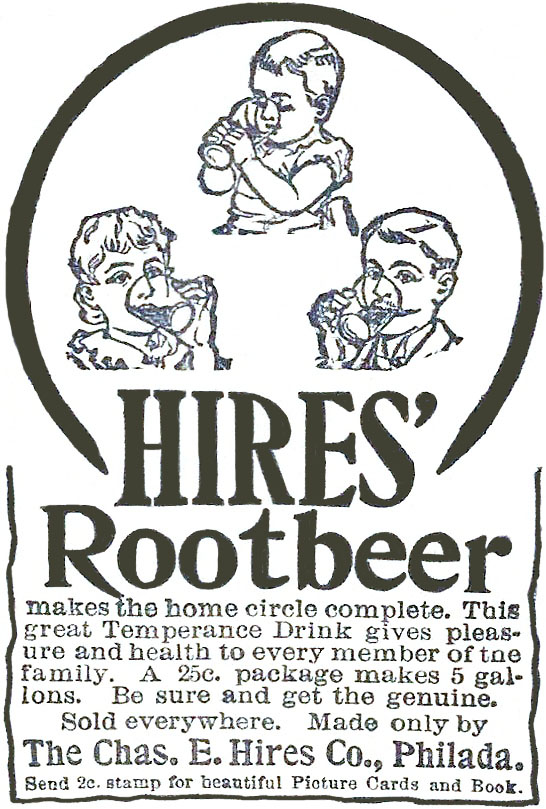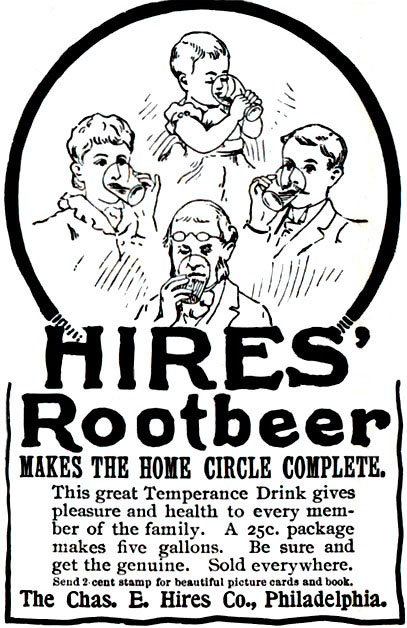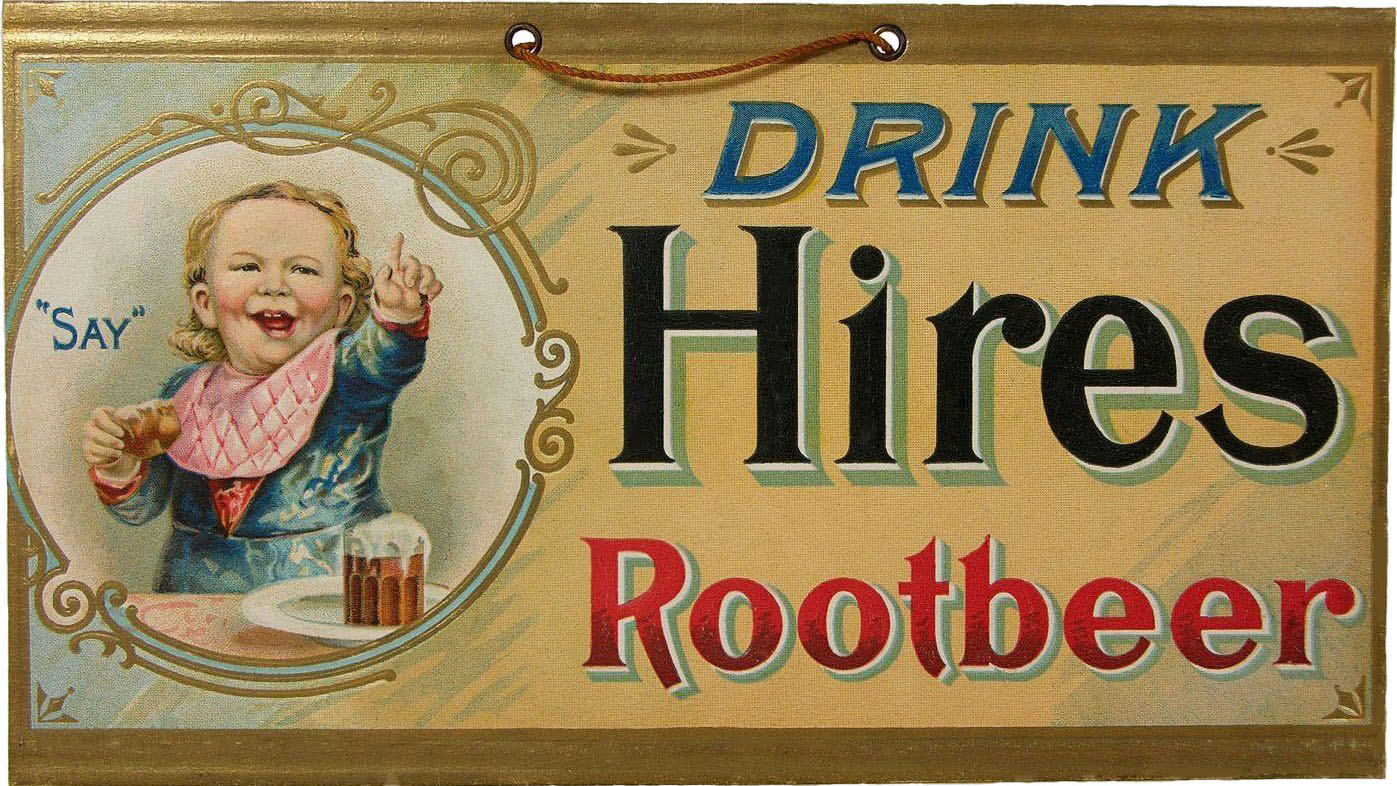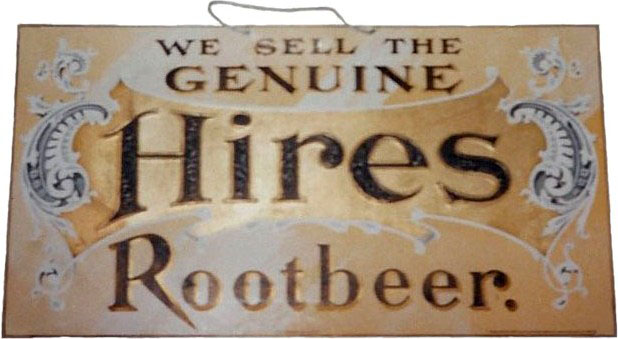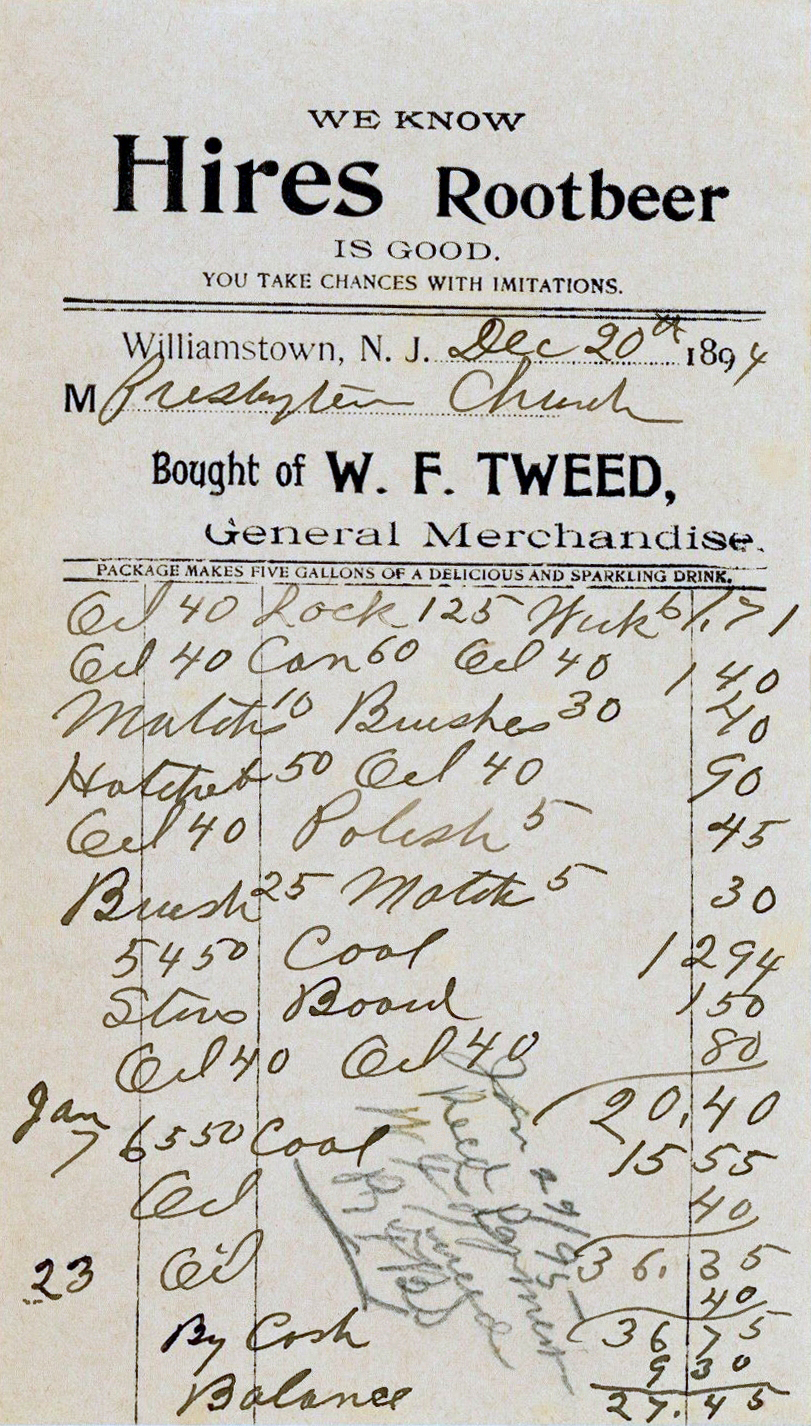1894
IT HAPPENED IN…1894
Railroad, coal miner, and garment workers’
demonstrations brought strikes into sharp focus.
The 1894 pace of laying railroad track was never surpassed.
The government granted public lands as subsidies for building
railroad lines and nearly 200 million acres were gifted.
Kellogg’s Corn Flakes were served as a health
food to Battle Creek Sanitarium patients.
Joseph A. Biedenharn of Vicksburg, Mississippi
began the first bottling of Coca-Cola using bottles with
Hutchinson’s Patent Spring Stoppers as closures.
This two-sided wholesale order form produced by Dickerman & Company in
Concord, New Hampshire pictures wall and die-cut signs, trade cards,
posters, a checkerboard “with checker men,” and more.
Special offers were based on the quantity of Hires Rootbeer
ordered and valid from January 1894 until June 1, 1894.
(Figure
1894-01, wholesale order form, front, 9.5” x 5.75”)
A
January 29, 1894 wholesale pricing sheet produced by
The Philadelphia Cash Grocer
listed “Hires’ Root Beer Liquid, per doz. $1.69.”
This trade card featuring eight babies is pictured in the 1894
wholesaler’s order form. It
was produced for Hires by the Sackett & Wilhelms Lithographing and
Printing Company in New York City.
(Figure 1894-02, “Always Bring
Health” trade card, front)
(Figure 1894-02, “Always Bring
Health” trade card, back)
This newspaper advertisement repeated the "Think Two Thinks" line from the back of the "Always Bring Health" tradecard.
(Figure 1894-02.3 newspaper
advertisement, 3
The shoulders of this hand blown, amber, apothecary-style bottle are embossed THE CHARLES E. HIRES CO. The front of the paper label states "SHAKE WELL BEFORE USING CONCENTRATED SOLUTION OF HIRES IMPROVED ROOTBEER BREWED FROM ROOTS & BARKS.” The back of the label includes detailed mixing directions plus this "NOTICE. - We reserve exclusive Rights to bottle Hires Rootbeer, ready to drink under Letters Patent granted January 16, 1894. MANUFACTURED ONLY BY THE CHAS. E. HIRES CO., MALVERN, PA."
(Figure 1894-02.5, Hires
Improved Rootbeer bottle, 7.5” tall)
The Hires Boy donned a tuxedo for serving “Hires'
Root Beer on Draught” to the three children pictured on this sign that
is also included in the 1894 wholesaler’s order form.
(Figure 1894-03, paper sign,
courtesy of Mike Godown)
This paper sign has a similar theme.
The well-dressed young ladies are upset with the man in the top
hat and tuxedo, saying “The mean thing wouldn’t treat – But we must have
it!” The back advertises
“Hires Root Beer For Blood.” This sign is also pictured in the
1894 wholesaler’s order form.
(Figure 1894-04, paper sign,
front, 8.0” x 11.0”, courtesy of Mike Godown)
Another version of this same sign bears this message on the back:
NEAR-SIGHTED.
Some druggists are so near-sighted in business that it is little wonder that they do not succeed. They try to imitate successful articles of real merit, and do not hesitate to employ deception in selling them, representing that they are "just as good." Intelligent people soon discover such frauds, and the druggist forfeits the trade that he may have temporarily enjoyed. Strictly honorable dealing alone will bring true success. If a druggist has a soda fountain and runs other drinks besides those of his own make of syrups he should see that they are run honestly and strictly as the manufacturer directs. The people should get what they ask for and what they pay for.
Perhaps the most popular and profitable drink of this age is Hires' Improved Rootbeer, when made and drawn as directed. It attracts trade to the fountain, and sells faster than all other drinks combined. Concentrated solution of Hires' Rootbeer is put up in one pound bottles especially for fountain use. The small bottles sold for family use are prepared to be made by fermentation, and should not be used at the soda fountain. It was the universal verdict last year by the druggists who served Hires' Rootbeer as directed, that they had a larger business with that than with any other drink. In most cases the word is "we have sold more than all other drinks put together." You do not want to be behind the times. You want to be up to the march of fine trade; therefore, order from your wholesale house, and send to us for beautiful show-cards, signs, etc., for your fountain. We will attend to you at once.
The extensive advertising contracts made this year, and the wide distribution of circulars, signs, and picture cards which we are making will increase its popularity and use, and you don't want to lose your share of this trade.
One Pound Bottles, 65 cts. $7.50 a Dozen.
THE CHARLES E. HIRES CO.,
117-119 Arch St., Philadelphia, Pa.
A third sign in this series continues the soda fountain theme. The superb artwork features two elegantly dressed ladies enjoying glasses of Hires’ Root Beer on draught while a nanny gives a glass of Hires’ Root Beer to a small girl holding a doll. The "IT IS SIMPLY DELICIOUS!" caption near the bottom has been trimmed from this example:
(Figure 1894-05, paper sign)
Here's a portion of the message printed on the back of this sign:
THE PRODUCTIVITY
OF THE SODA FOUNTAIN FOR PROFIT IS UNQUESTIONABLY GREAT IF YOU CAN DO THE BUSINESS
Now the most important point is to secure the trade. This problem is easily solved. Dispense only the best and highest quality of syrup that can be made; exercise cleanliness in attendance; let the people know it, and success is sure to follow; cater to the public taste; give them what they want, and you have struck the key-note of money making.
Perhaps the most popular drink to-day is Hires' Rootbeer. There are few families throughout this broad land that do not drink it. The immense amount of money being spent this season in advertising it will increase its popularity. To every druggist who will draw and dispense it properly a larger sale of Hires' Rootbeer is guaranteed than of all his other syrups put together.
Put up in one pound bottles especially for making syrup for running in soda fountains. Do not use the small bottles; they are packed for family use, and are prepared to be made by fermentation.
Order through your wholesale house, and write us for beautiful signs, show-cards, etc., to hang on your fountain, and you will secure the trade of the town.
(Figure 1894-06, Scribner’s magazine, July 1894)
(Figure 1894-07, Chicago Tribune, July 10, 1894)
(Figure 1894-08, Chicago Tribune, July 10, 1894)
(Figure 1894-09, four family members pictured)
Charles E. Hires included the following comments in “Some Advertising Reminiscences 1869-1913,” an article he wrote for the July 24, 1913 issue of Printers’ Ink (note: although he was referring to 1894, he was actually bottling as early as mid-1889):
This (1894) was about the time I tried to experiment
by putting out the product ready to drink in bottles.
The household extract, which needed preparation and a certain
period of aging before it was ready to drink, was naturally a seasonable
product, and it was thought that by putting the goods in bottled form,
more or less of a sale could be induced the year round, and more
expensive advertising matter could be used.
The experiment was not a success on account of the
price we put on the bottled goods.
Transportation charges were too heavy, and we found it much more
economical to license the bottling privilege to local concerns, as we
are doing today. Of course
we know this now but advertising agencies did not know it until somebody
tried it, I assure you.
The bottle of Hires’ Rootbeer pictured in this
advertisement is sealed with a cork held in place by wire and lying on a
block of ice. Hires would
re-use this image in 1896.
(Figure
1894-10, The
Housewife magazine, August 1894)
During the summer of 1894 the family home at 1712 Mt. Vernon Street, Philadelphia, was listed for sale. Originally built in 1880, this three story brownstone in the Spring Garden neighborhood has been converted to apartments and the building still appears to be "in perfect order." Google the address to view a current photo.
(Figure
1894-10.5, The
Philadelphia Inquirer, August 20, 1894)
This hanger is also pictured on the 1894 wholesaler's order form:
(Figure 1894-11, cardboard
hanger, 8.0” x 12.5”)
(Figure 1894-12, cardboard
hanger, Hires Family Archives)
An 1894 letter sent to bottlers advertised “Belfast
Ginger Ale Extract, available from The Chas. E. Hires Co., Importers &
Exporters, Branches Baltimore, New York City, San Francisco, Chicago.”
(Figure 1894-13, paper invoice,
Charles E. Hires Company sales for 1894 were listed
as 3,134,947 packages or 15,674,733 gallons or 313,494,700 glasses.

